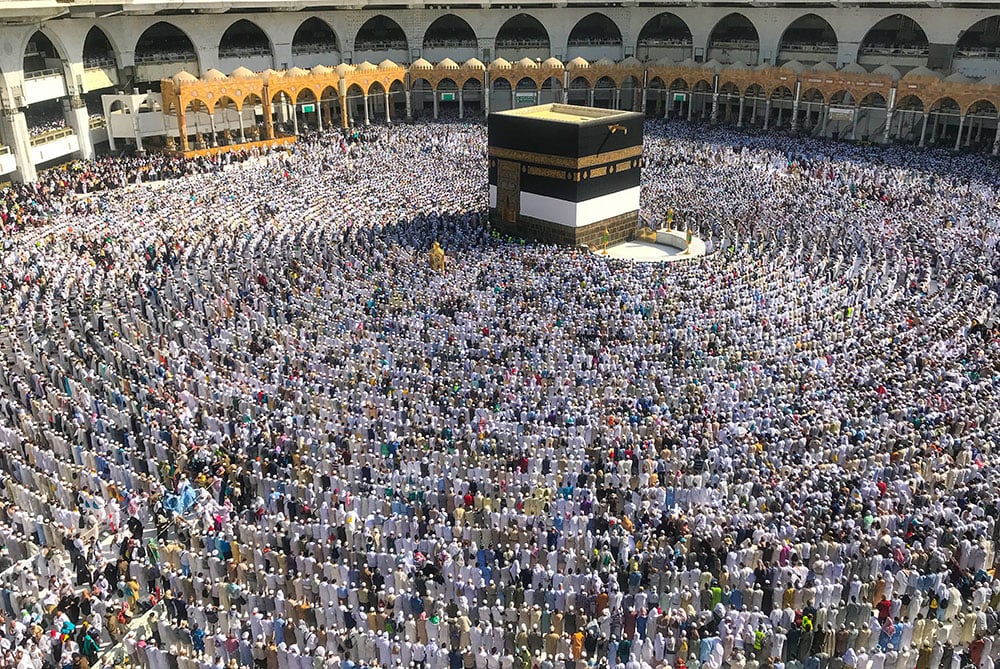
Image credit: Getty Images
As part of its strategic vision to modernise religious services and infrastructure, Saudi Arabia is rapidly transforming how millions of worshippers experience the Two Holy Mosques and associated pilgrimage sites.
Leveraging cutting-edge technology, streamlined operations, and integrated awareness initiatives, multiple Saudi authorities are working in sync to create a smarter, safer, and more spiritually enriching journey for pilgrims from around the world.
Read more-Umrah 2025: New digital platform launched for visas
This sweeping transformation is not only elevating service quality and operational efficiency but also setting a new global standard for how technology can support large-scale religious gatherings in the digital era.
Building a digitally integrated pilgrimage ecosystem
At the heart of this transformation is the General Authority for the Care of the Affairs of the Grand Mosque and the Prophet’s Mosque, which has rolled out a robust, digitally integrated strategy designed to enhance service delivery and ensure seamless access for worshippers. Through a unified digital environment supported by advanced systems and a highly skilled workforce, the authority aims to improve quality, productivity, and user experience across all service touch points.
In the Islamic year 1446 AH, the authority launched an impressive suite of multilingual digital content, including 217,000 translated words, 2,512 digital pages, and 240 visual and audio materials in seven languages. These tools cater to the needs of a global, multilingual pilgrim base and support spiritual guidance in accessible formats, a Saudi Press Agency report said.
Complementing this is a range of eight digital services used by over 3.6 million visitors, covering everything from booking systems and experience enhancement tools to beneficiary feedback channels.
A further 1.2 million worshippers benefited from five seasonal digital services, which facilitated applications for itikaf, iftar, seasonal job permits, and access to important religious content such as the Arafah sermon.
In total, the authority processed 12,723 seasonal reports, reflecting its commitment to real-time operational responsiveness and continuous improvement.
Strengthening operational backbone with institutional systems
To support these digital services, the authority has implemented a robust foundation of eight institutional systems, including platforms for volunteering, technical support, internal communication, and project management. These systems are aligned with broader smart government goals and integrate with national platforms such as Nusuk and Tawakkalna, enhancing data governance and the overall pilgrim experience.
One of the most notable advancements is the deployment of computer vision and crowd management systems, supported by 2,500 cameras and five advanced monitoring systems, allowing real-time crowd analysis and proactive safety interventions during peak periods.
As the digital footprint of the holy sites expands, so does the need for robust data protection. In response, the authority has introduced nine advanced cybersecurity systems, guided by 17 technical and operational standards, and supported by 13 comprehensive procedures for policy enforcement and digital process regulation.
Three contingency plans have also been developed to counter digital threats and emergencies, ensuring business continuity. Additionally, 19 official policies have been ratified and published to safeguard the integrity and reliability of digital services delivered to millions of global users.
Infrastructure upgrades transform pilgrim entry points
Beyond digital transformation, physical infrastructure is also receiving major investment. The Royal Commission for Makkah City and Holy Sites (RCMC) is spearheading the redevelopment of Miqats, the sacred gateways where pilgrims enter the state of Ihram before Hajj or Umrah.
During the 1446 AH Hajj season, improved operational planning helped slash pilgrim waiting times from 80 minutes to 39 minutes, while achieving a 100 per cent response rate to visitor feedback and a 99 per cent satisfaction rating. These figures underscore the success of RCMC’s focus on both efficiency and user-centric design.
Current development projects include the redesign of Miqat Qarn Al Manazil, focusing on traffic flow optimisation, expanded prayer areas, and modernised facilities. Upgrades at Miqat Wadi Muharram aim to enhance infrastructure, visual aesthetics, and accessibility via major transportation routes.
“These efforts are rooted in a broader strategy to improve service delivery, ensure long-term sustainability, and preserve the Islamic architectural identity of these sacred sites,” said Eng. Saleh Al Rasheed, CEO of RCMC.
National awareness strategy supports spiritual engagement
Adding another dimension to the modernisation efforts is a large-scale religious awareness campaign launched by the Ministry of Islamic Affairs, Dawah and Guidance in Madinah for the 1447 AH Umrah season. These initiatives are designed to provide spiritual, intellectual, and logistical support to the millions of pilgrims expected to visit.
The campaign comprises over 80,000 activities, encompassing 13 major programs, four training courses, two forums, and five intellectual initiatives. Delivered across mosques and Islamic centers in Madinah’s various governorates, these programs aim to instill values of moderation, balance, and authentic Islamic teachings.
A suite of digital tools, including e-books, sermons, academic lessons, and lectures, will be utilized alongside translators and interactive awareness booths to ensure broad accessibility, especially for international pilgrims who may face language or cultural barriers.
A unified vision for the future of pilgrimage
Together, these interlinked initiatives, from smart digital ecosystems and cybersecurity fortification to physical infrastructure upgrades and mass awareness campaigns, are reshaping the future of religious pilgrimage in Saudi Arabia. By aligning technology with tradition, and efficiency with empathy, the Kingdom is delivering an elevated, secure, and deeply spiritual experience to millions of pilgrims while positioning itself as a global model for large-scale religious service innovation.
With demand for pilgrimage growing year after year, Saudi Arabia’s proactive investments in digital infrastructure, operational systems, and spiritual education are not only meeting today’s challenges, they’re laying the groundwork for the future of worship.

